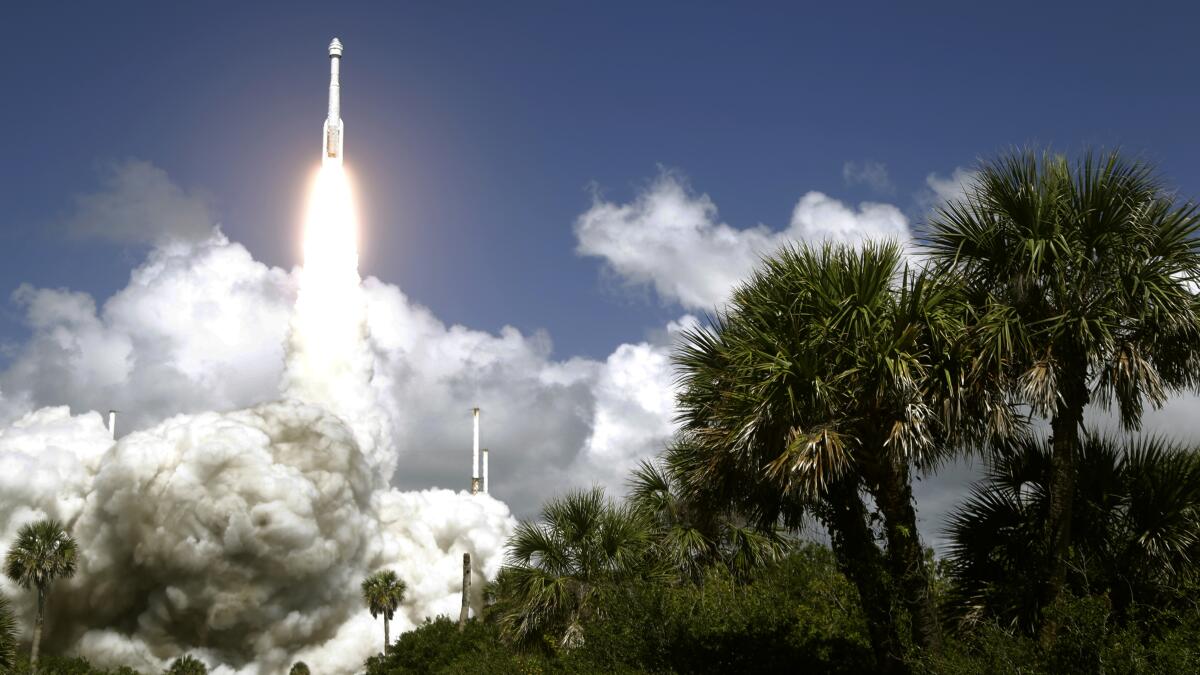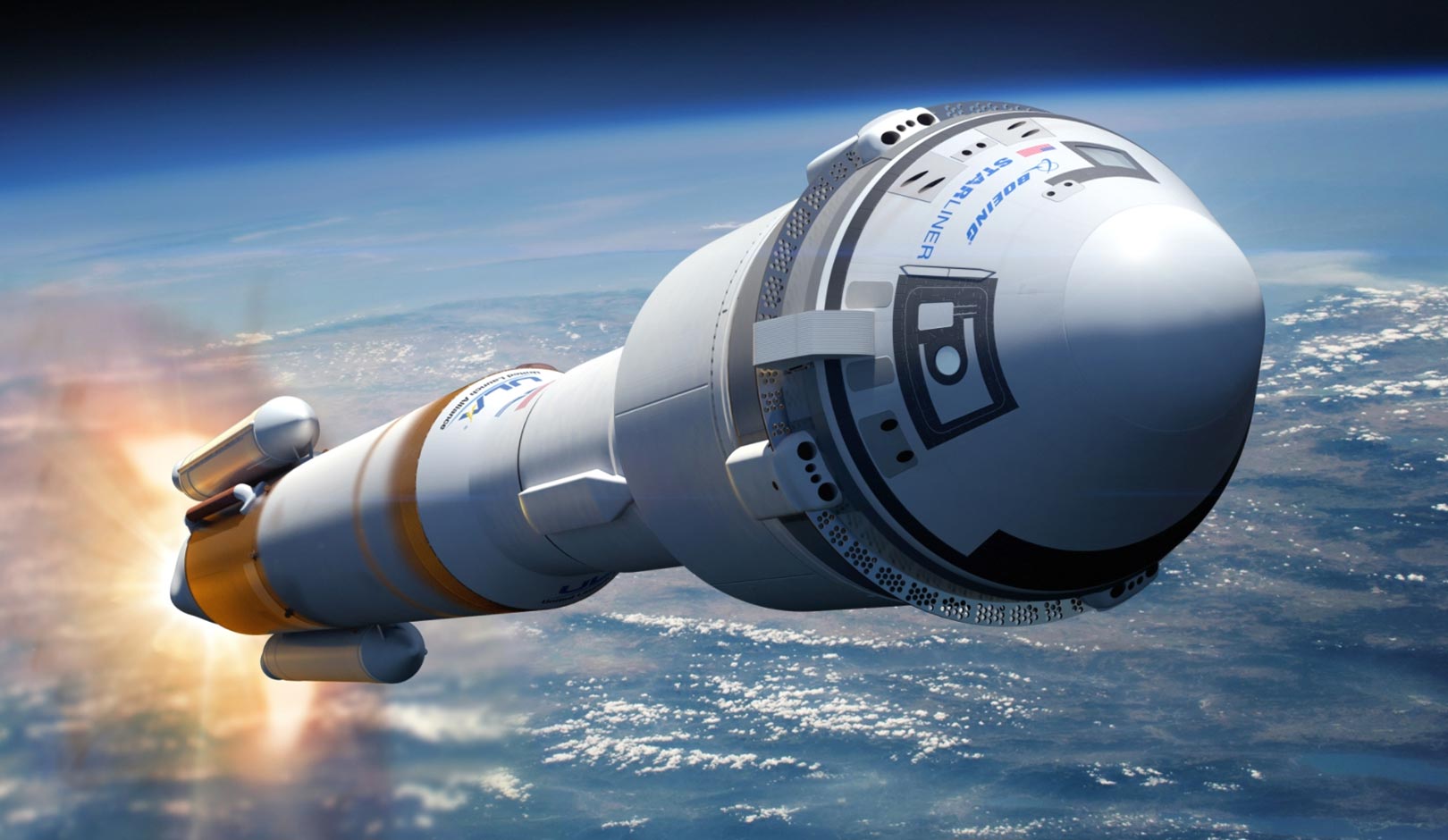Mission Overview
Nasa, boeing starliner launch – The NASA Boeing Starliner launch mission is a significant milestone in the realm of space exploration. This mission aims to test the capabilities of the Starliner spacecraft, a reusable crew capsule designed to transport astronauts to and from the International Space Station (ISS) and other destinations in low Earth orbit.
NASA’s Boeing Starliner launch, originally scheduled for this week, has been postponed once again due to technical difficulties. While the exact cause of the delay is still under investigation, it has sparked discussions about the future of space exploration and the safety concerns that accompany it.
Meanwhile, the news of actor Alec Baldwin ‘s involvement in a fatal shooting incident on the set of a Western film has raised questions about the responsibility of those involved in the entertainment industry. As NASA engineers continue to work on resolving the Starliner issues, the incident serves as a reminder of the potential risks associated with both space exploration and artistic endeavors.
The Starliner spacecraft is equipped with advanced avionics, environmental control systems, and docking capabilities. It is designed to accommodate up to seven astronauts and features a spacious interior with customizable seating arrangements. The spacecraft’s exterior is covered with a thermal protection system to withstand the extreme temperatures encountered during launch and re-entry.
Significance
The success of this mission is crucial for several reasons. Firstly, it will demonstrate the reliability and safety of the Starliner spacecraft, paving the way for future crewed missions to the ISS and beyond. Secondly, it will provide valuable data on the spacecraft’s performance in various orbital conditions, aiding in the development of future space exploration vehicles. Lastly, this mission represents a significant step towards NASA’s goal of establishing a sustainable human presence in space.
Launch Preparations and Timeline: Nasa, Boeing Starliner Launch

The launch of the Boeing Starliner spacecraft is a meticulously planned and executed event that involves a series of intricate preparations and a precisely choreographed timeline. Before the spacecraft can embark on its journey to the International Space Station (ISS), it undergoes a rigorous assembly, testing, and integration process.
Assembly and Testing
The Starliner spacecraft is assembled at the Kennedy Space Center’s Space Station Processing Facility. The spacecraft’s various components, including the crew module, service module, and launch abort system, are carefully assembled and integrated into a single cohesive unit. The spacecraft undergoes rigorous testing to ensure that all systems are functioning optimally, including its avionics, propulsion, and life support systems.
Integration and Rollout
Once the spacecraft has been assembled and tested, it is integrated with the United Launch Alliance (ULA) Atlas V rocket, which will serve as its launch vehicle. The spacecraft and rocket are then transported to the launch pad, where they are carefully positioned and secured. The launch pad is equipped with a variety of systems to support the launch process, including fueling, communications, and safety measures.
Launch Timeline, Nasa, boeing starliner launch
The launch timeline for the Boeing Starliner mission is as follows:
– T-0: Liftoff. The Atlas V rocket ignites its engines, generating tremendous thrust to propel the spacecraft into the sky.
– T+2 minutes: Booster separation. The rocket’s first stage, known as the boosters, separates from the spacecraft, falling away to allow the second stage to continue the ascent.
– T+5 minutes: Fairing separation. The protective fairing that encapsulates the spacecraft during launch is jettisoned, allowing the spacecraft to deploy its solar arrays.
– T+10 minutes: Second stage separation. The rocket’s second stage separates from the spacecraft, and the spacecraft’s own propulsion system takes over.
– T+21 minutes: Orbit insertion. The spacecraft enters Earth orbit, and its trajectory is adjusted to rendezvous with the ISS.
– T+24 hours: Docking. The spacecraft docks with the ISS, allowing the crew to transfer to the space station.
Safety Measures and Contingencies
The launch process involves a number of safety measures and contingencies to ensure the safety of the spacecraft and crew. These include:
– Redundant systems: The spacecraft and rocket are equipped with redundant systems to minimize the risk of failure. For example, the spacecraft has multiple engines and navigation systems.
– Launch abort system: The spacecraft is equipped with a launch abort system that can separate the spacecraft from the rocket in the event of an emergency.
– Contingency plans: The launch team has developed contingency plans to address potential issues that may arise during the launch process. These plans include aborting the launch, rescheduling the launch, or changing the spacecraft’s trajectory.
In-Flight Operations and Objectives

The in-flight phase of the NASA-Boeing Starliner mission will encompass a series of planned maneuvers and experiments designed to achieve the mission’s scientific objectives. The crew, if applicable, will play a crucial role in conducting these experiments and operating the spacecraft.
Scientific Objectives and Research Goals
The mission’s primary scientific objectives include:
- Conducting experiments in microgravity to advance our understanding of the effects of space travel on human physiology and biology.
- Testing new technologies and systems for future human space exploration missions.
- Collecting data on the space environment and its impact on spacecraft and human health.
In-Flight Maneuvers and Experiments
The in-flight phase will involve a series of maneuvers and experiments, including:
- Rendezvous and docking with the International Space Station (ISS).
- Conducting experiments in the ISS’s microgravity environment.
- Performing maintenance and repairs on the ISS.
- Testing the Starliner’s systems and capabilities.
The crew will be responsible for operating the Starliner, conducting experiments, and monitoring the spacecraft’s systems. They will also participate in outreach activities, such as educational programs and media interviews.
The NASA and Boeing Starliner launch, originally scheduled for today, has been postponed due to technical difficulties. For the latest updates on the launch, please visit boeing launch today. The NASA and Boeing teams are working diligently to resolve the issue and ensure a successful launch as soon as possible.
NASA’s Boeing Starliner launch has been highly anticipated, and the starliner launch is set to be a major milestone in space exploration. The spacecraft will carry astronauts to the International Space Station, and it will also be used for future missions to the Moon and Mars.
The launch is a testament to the years of hard work and dedication by NASA and Boeing engineers, and it is a sign of the bright future of space exploration.
The highly anticipated launch of NASA’s Boeing Starliner is an event eagerly awaited by space enthusiasts worldwide. As we anxiously follow the countdown, we can’t help but recall the influential role of Rotten Tomatoes in shaping our cinematic tastes. Just as Rotten Tomatoes provides a consensus on the quality of films, the successful launch of the Starliner will serve as a testament to the tireless efforts of countless engineers and scientists.
The launch of NASA’s Boeing Starliner, a spacecraft designed to carry astronauts to the International Space Station, has been postponed. While we wait for the rescheduled launch, let’s take a moment to appreciate the wonders of the natural world, like flying spiders.
These arachnids use silk to catch the wind and soar through the air, a remarkable feat of adaptation. As we eagerly anticipate the Starliner’s journey to the stars, let’s not forget the marvels that exist right here on Earth.